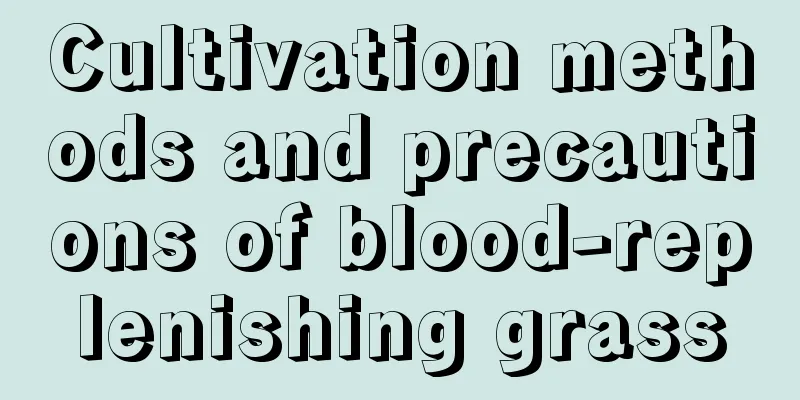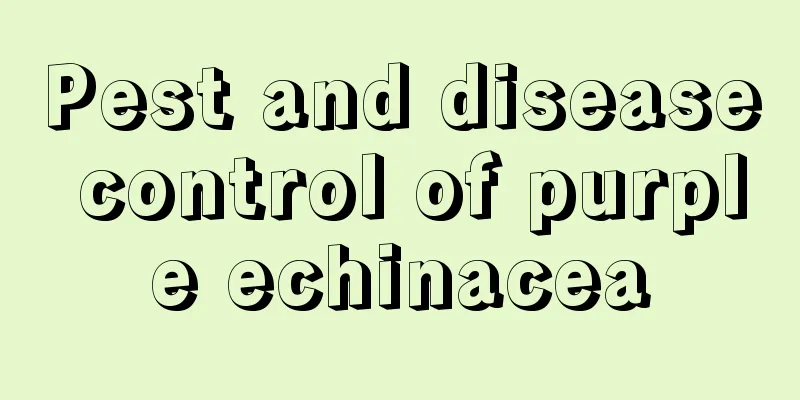Cultivation methods and precautions of blood-replenishing grass

1. Maintenance methods1. Temperature: Limonium prefers a cool environment. Specifically, it is best to be between twelve and twenty degrees. Because it has a very strong ability to resist cold, there is generally no need to take special anti-cold measures even in very northern areas. However, if you want it to bloom better, the temperature should not be too low. 2. Light: It has higher requirements for sunlight when it grows fast and blooms, so it is better to place it in a place with scattered light. But in summer it is best to keep it in a cooler environment, otherwise it will wilt. 3. Watering: When the blood-replenishing grass is in the seedling stage, it requires more water. Generally speaking, it is best to keep the soil moist. After that, it will have a certain degree of drought resistance, but it still cannot withstand long-term drought. 4. Fertilization: Blood-replenishing grass has a relatively high demand for fertilizer. In addition to the nutrients already in the soil, top dressing must be applied in a timely manner. Especially during the flowering period, fertilizer is needed every ten days, and the main fertilizer used is phosphorus fertilizer. 2. Breeding techniques1. Reproduction: Sowing method can be used. One of the first tasks is to select an appropriate sowing site. It is best to plant it in a place with deep soil that is easy to drain, preferably sandy soil. Then comes the selection of seeds. When sowing, the row spacing can be about 40 cm and the plant spacing can be about 30 cm. When sowing, water thoroughly in time and ensure ventilation conditions. When it grows to a certain height, it can be planted. 2. Pruning: The first thing is to prune its flower branches. Keep four or five for each plant, not too many. In addition, proper pruning is also required after flowering. 3. Problem diagnosis and treatment1. Disease: "Viral disease" is a common disease that can cause plant deformities and the leaves will also be harmed to a certain extent. It is best to prevent it with omethoate and pay attention to disinfection. Another problem is "scorch disease", which is prone to occur when it rains a lot and can be prevented by using cypermethrin. 2. Pests: The main ones are "aphids", which are harmful in themselves and can also spread some diseases. They need to be cleaned up in time. IV. Other issues1. Toxicity: Its seeds are poisonous, and its many parts can be used as medicine. 2. Can it be raised at home? Yes, it is possible, because it is not mainly used for viewing. |
<<: Breeding methods and precautions of silver longevity
>>: Cultivation methods and precautions of peony
Recommend
How to prune ivy
1. More resistant to shearing Pruning is very imp...
Cultivation method of purple sweet potato
Purple sweet potato is a food ingredient with hig...
Things to note when repotting gardenia
Pay attention to the time to repot gardenia Many ...
What are the cultivation methods and precautions of Selaginella
Selaginella cultivation method When caring for Se...
How to cultivate the grass
1. Maintenance methods 1. Temperature: Ornamental...
Apple leaf cultivation methods and precautions
1. Matrix selection Apple leaves grow well in san...
What kind of fertilizer is good for honeysuckle base fertilizer (base fertilizer application method)
Effect of honeysuckle base fertilizer Applying ba...
Is the flower of Albizia Julibrissin poisonous?
1. Non-toxic This flower is actually not poisonou...
Eight tips for raising pigs in winter
The colder weather is also a challenge for farmer...
When should strawberries be planted?
Strawberry is a perennial plant with relatively f...
Can loquat be grown hydroponically? Methods of growing loquat hydroponically
Can loquat be grown hydroponically? Loquat can be...
Can I grow a fig tree at home?
Can I grow a fig tree at home? Fig trees can be p...
The secret to raising succulents: they will get extremely fat in 3 weeks. The more you abuse them, the crazier they will grow!
Control type 1: Soil control method If you want t...
Do I need to wash the roots of newly bought succulents?
1. Is it necessary to wash the roots? It is not n...
How long does it take for celery to germinate after sowing?
How long does it take for celery to sprout? It ta...









